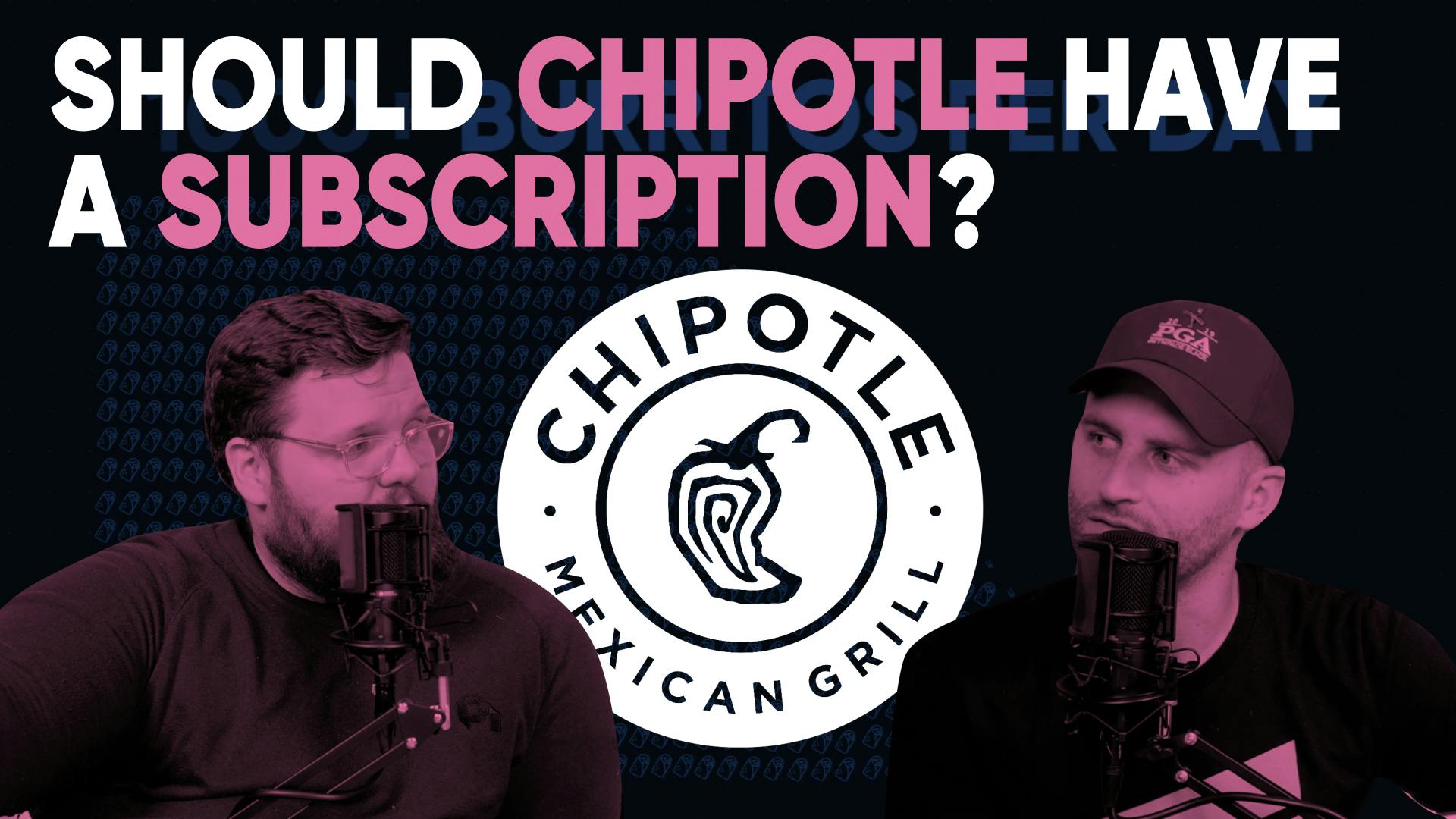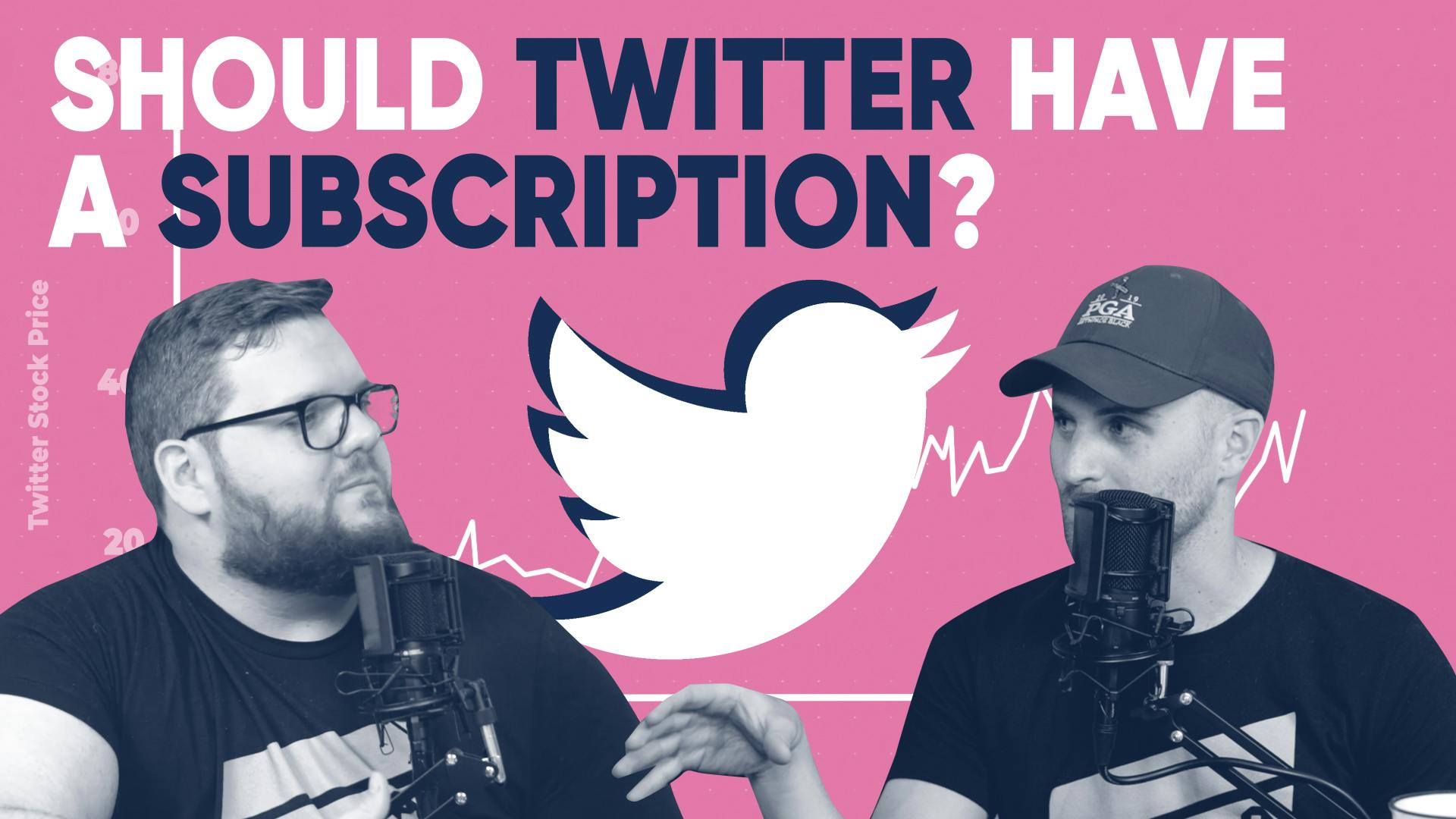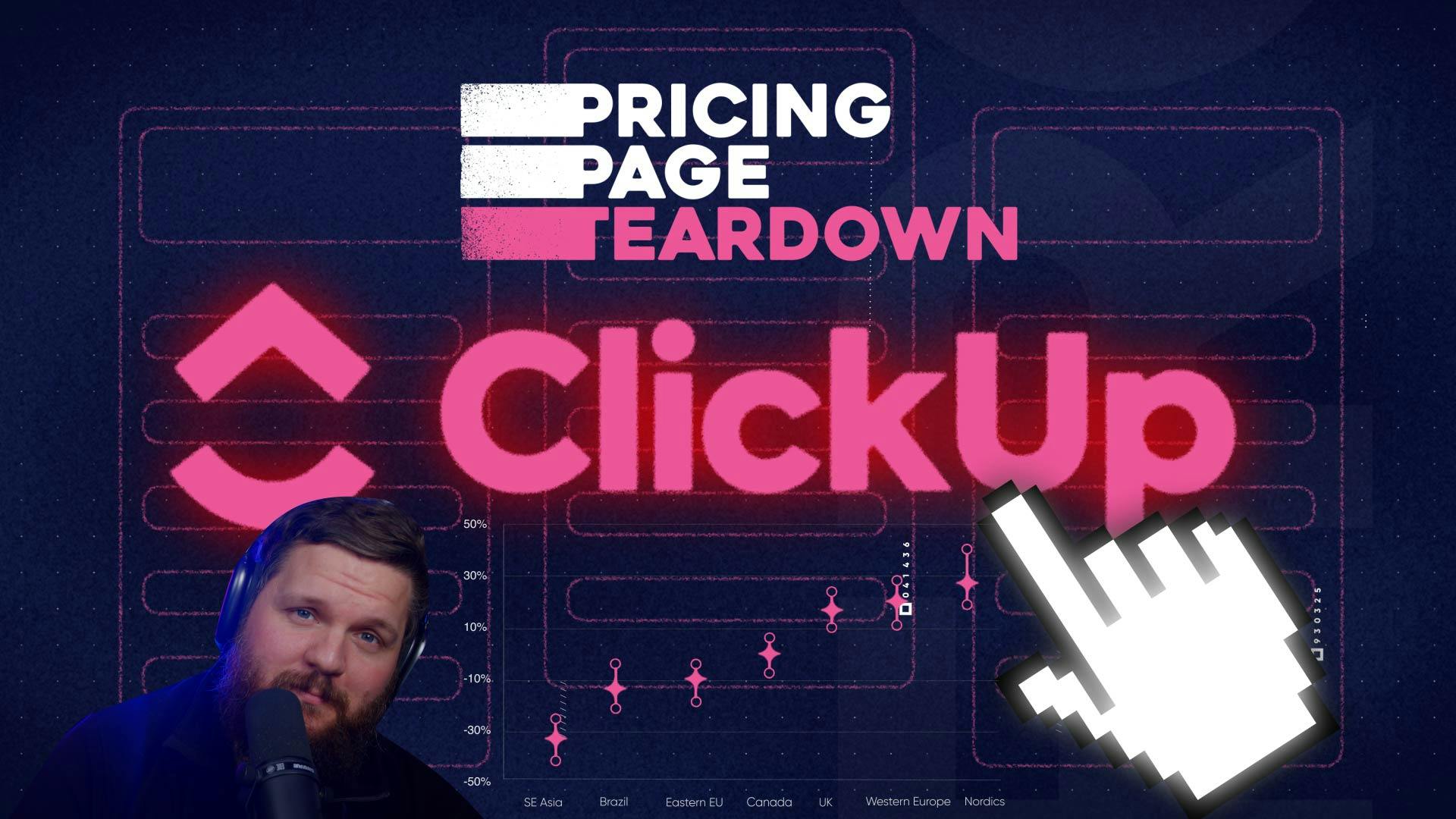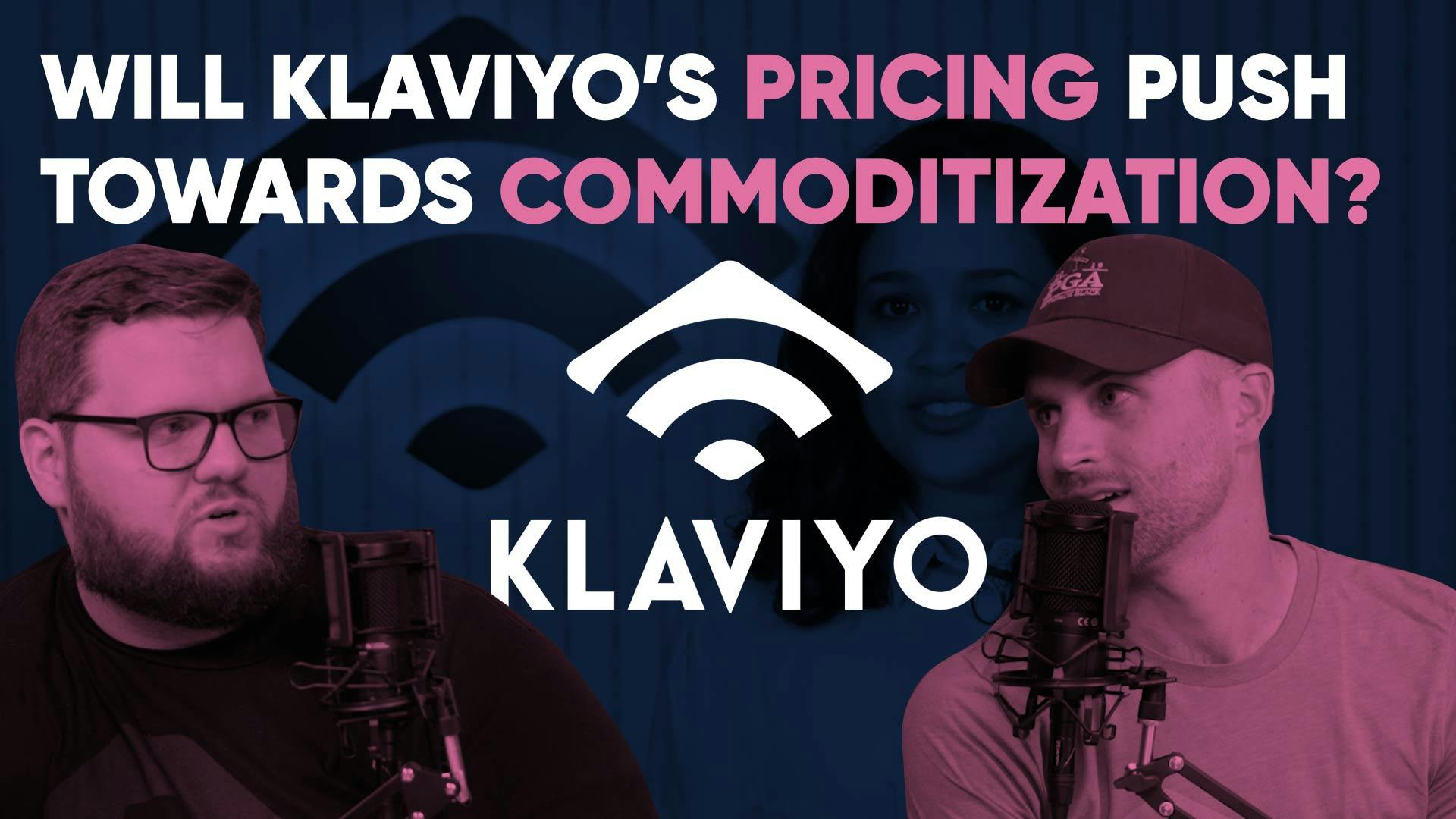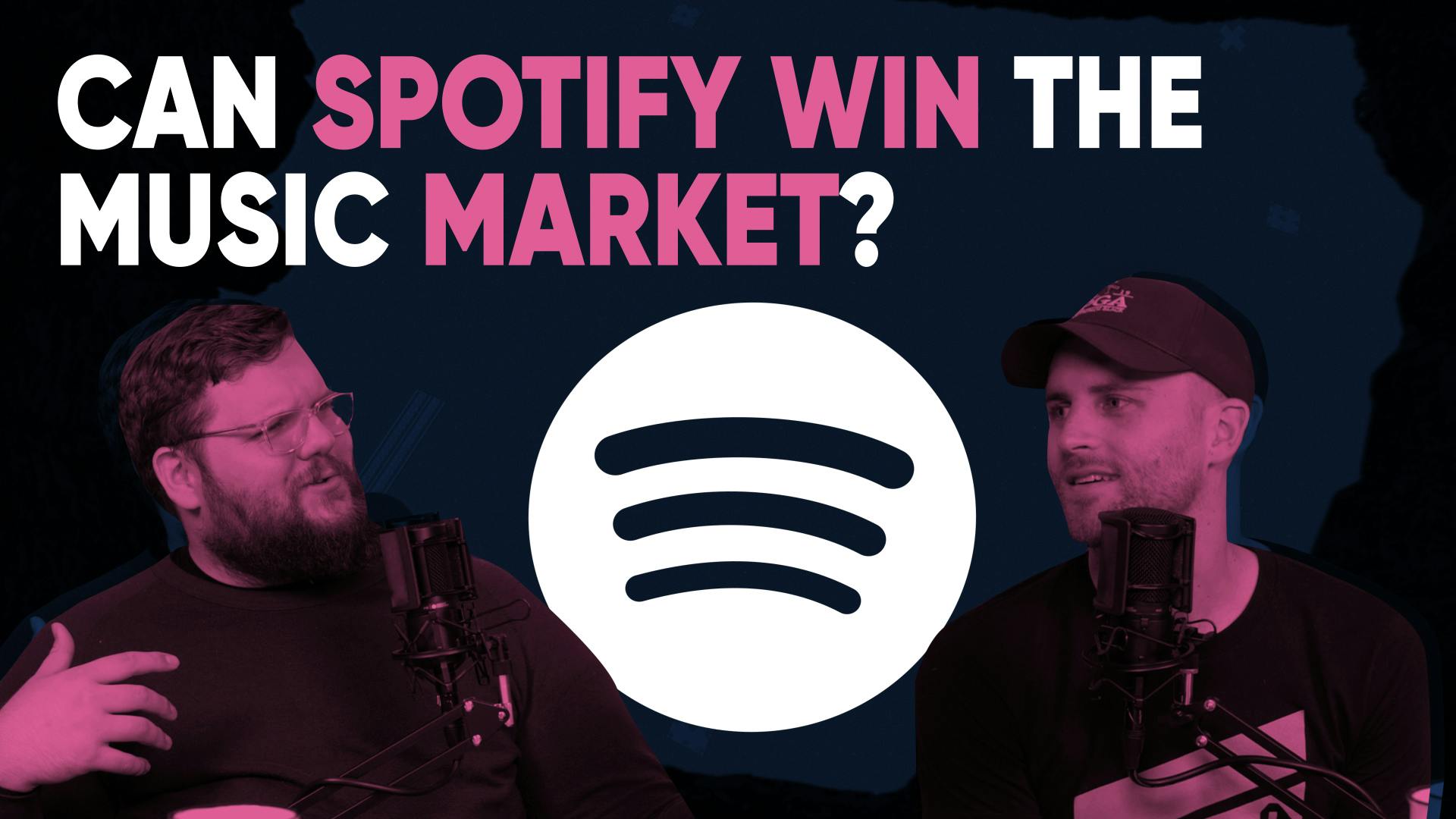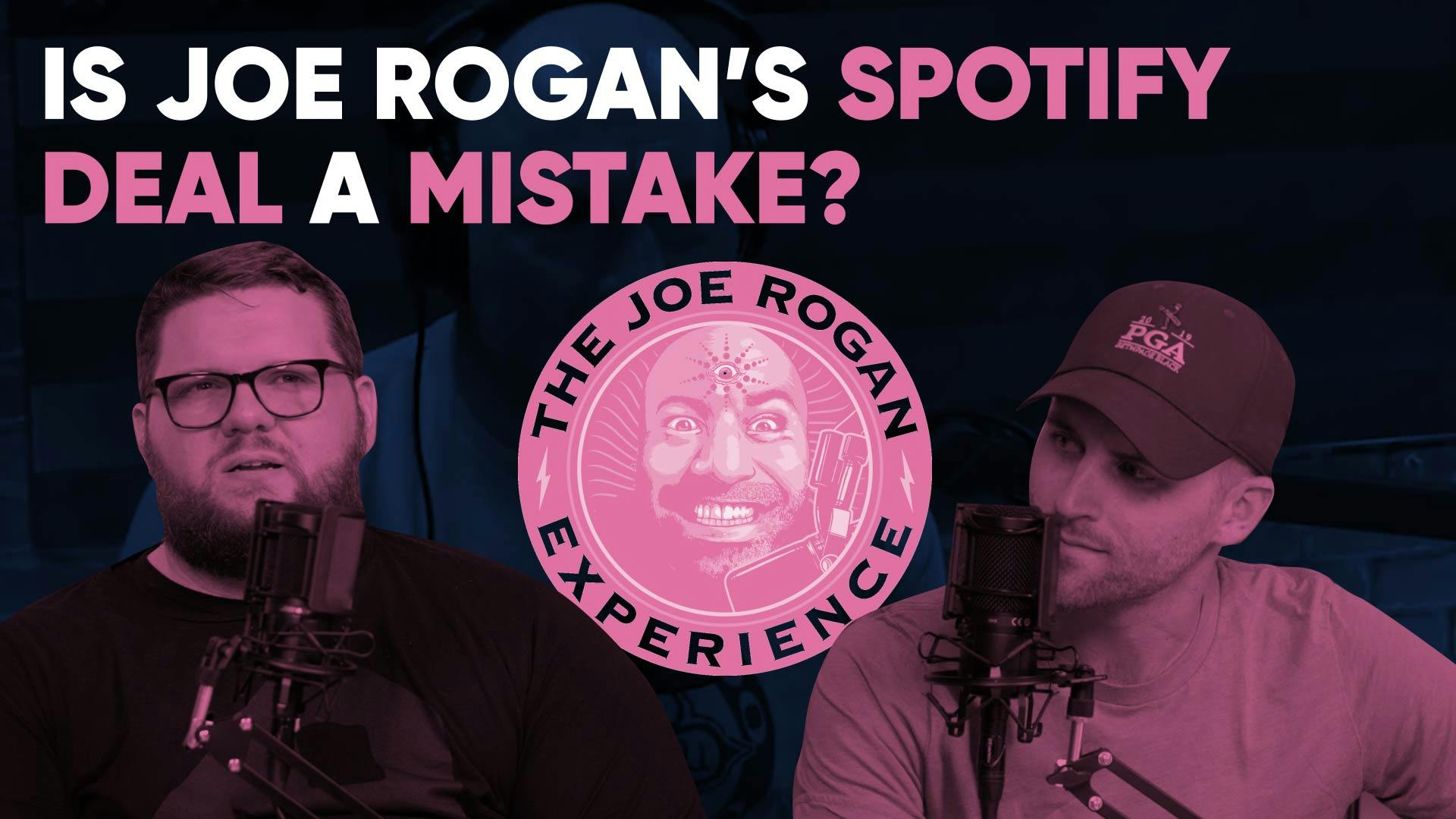
Is Front pushing too hard?
This episode might reference ProfitWell and ProfitWell Recur, which following the acquisition by Paddle is now Paddle Studios. Some information may be out of date.
Please message us at studios@paddle.com if you have any questions or comments!
Front
Email is essential to our personal and professional lives. However, business email has not seen much innovation in the last 15 years. Mathilde Collin and Larent Perrin founded Front in 2013 to revolutionize corporate communication. Their product pulls together conversations from different channels, such as Outlook, Slack, Twitter, and SMS, and presents them in a shared view. The ultimate goal is to reinvent work by improving team fulfillment through reducing miscommunication and stress, and increasing productivity. Front has raised over $100 million from Sequoia and other software elites, has over 200 team members, six thousand customers, and an $800 million valuation.
Front has received criticism for fighting battles on multiple fronts. It is difficult to pinpoint where Front fits in the wider messaging and communication category. Additionally, there is high fragmentation amongst their customer base with many different types of businesses using their products. While this is a champagne problem, it can complicate product and marketing decisions.
The question becomes: How can Front train the market when there are many, many alternatives and incumbent players that maybe don’t do what Front does, but do some or a lot of it? Also, how does Front get their monetization in the right place to make sure they’re not alienating their different customer constituencies? Front has a lot of work ahead of them, so we’re going to answer these questions by collecting data from 10, 542 current and prospective Front customers. Keep reading for all the data and answers to these questions.
Email, email, email
What's the most annoying thing about email? For me, it's searching for emails I've seen but can't keep track of. Email search and lost context are major issues. Front solves this by allowing notes and responses in the same inbox. It's like a help desk on top of email. Front is pushing for a new kind of workplace communication by integrating different channels like live chat, Twitter, and Facebook. Their design-focused approach sets them apart from other aggregators. Email is still the primary means of business communication, but Front handles everything else efficiently. Their website could be clearer, but they have valuable SMB and growing company propositions. We'll examine their pricing and customer data to see what they're doing well and what they could improve.
Front's pricing page
Great pricing page overall! Here are two small tweaks I would suggest:
- Instead of using names like Starter, Plus, Prime, and Enterprise, use more descriptive names that convey the value proposition and persona/segment identity for each plan.
- Instead of including function-based call-outs like "Customize your workflow with rules and integrations" and "More channels and data to transform your teamwork," focus on highlighting the unique value proposition of each plan.
By implementing these changes, visitors to the pricing page will be able to quickly and easily understand which plan is right for them.
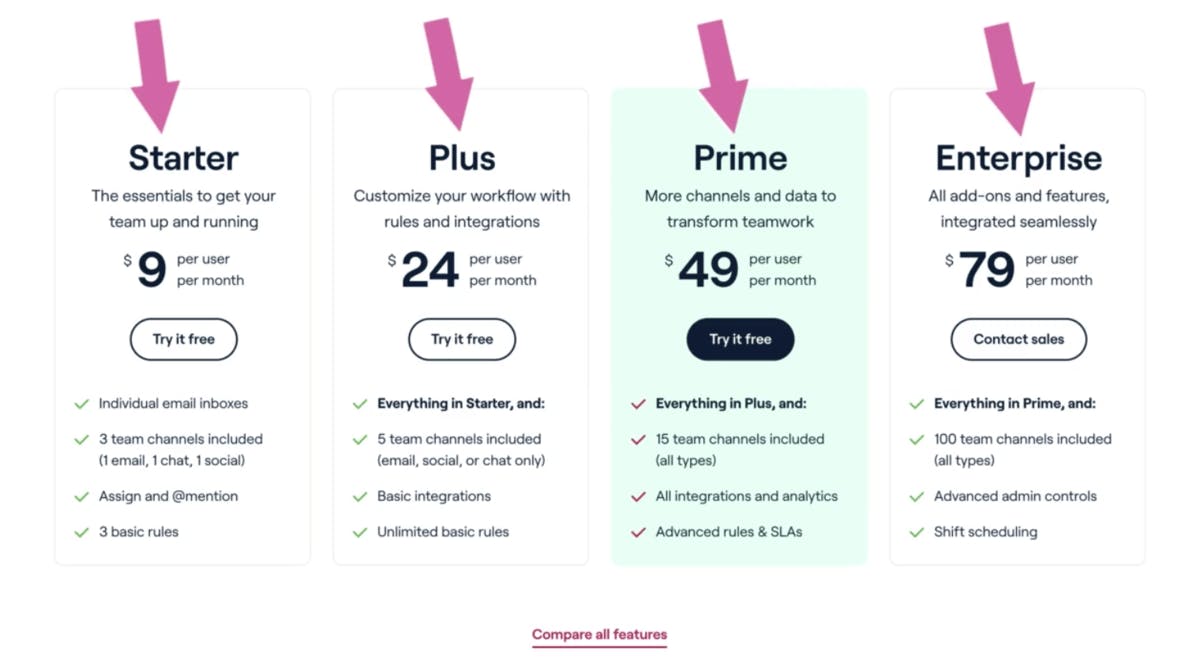
It's difficult to determine what we need because I'm not sure if I should customize my workflow with rules and integrations, or if I need more channels. The decision process should be easier for the user. The "compare all features" drop-down is a great feature that highlights the important information in a condensed manner. The sections are also well-organized and easy to navigate. However, it is still important to provide enough information for those who want to explore in-depth. The "show all features" option can help users make a more informed decision. Let's explore the data further…
Data and analysis
Push Pricing
Front needs to be careful with push pricing. This is when users are pushed to a higher pricing tier regardless of their usage or needs. Pull pricing is when users' usage or feature needs pull them up to a higher tier, and they're willing to pay more. Salesforce is an example of push pricing, where upgrading to access one feature requires getting all the other features, even if you don't need them. While Front isn't doing this to the extent of Salesforce, they should still be cautious.
On Front's pricing page, SMS channels are only available in the Prime plan which costs $50 per user per month. This forces users who only need email, messenger, and maybe SMS to pay for unnecessary features and advanced rules, sometimes up to five times more than what they need. It would be better if Front offered SMS channels as an option in their main tier instead of only in the Prime plan.
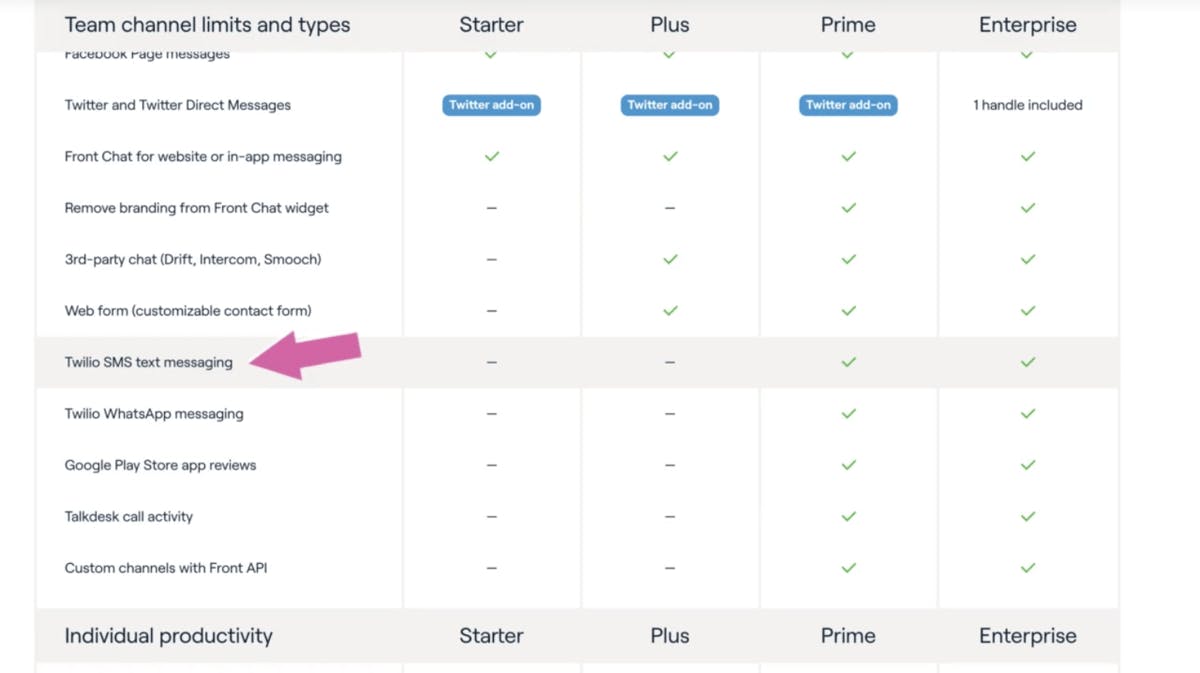
Some features, like private inbox analytics, could be made into an add-on, but are currently in the premium tier. Integrations are also tiered, with CRM integration requiring the top-tier Prime plan, and even a Zapier integration costing extra. The Prime plan also removes branding from the Front Chat Widget, which may not be worth it for small to medium-sized businesses.
Value Matrix
You're about to see something called a value matrix. We collected data from the group comparing feature preferences and plotted those on the horizontal axis, more valued features on the right, less valued on the left. We then collected willingness to pay for the overall product and plotted that based on their number-one feature preference on the y-axis. Analyzing data in this manner allows us to determine which features are differentiable add-ons, core, or commoditized for each segment.
Annual billing and consumer products
There is higher willingness to pay for some features, but it's still very low. Features like Audit Trail, Automation Integration with Zapier, Twitter access, and Remove Front branding have a plus or minus 10% impact on willingness to pay. These should just be included, or moved to lower tiers to avoid pushing customers up. Analytics and SSO roles and permissions could be add-ons, but it's okay to have them in premium tiers. Front needs to reconsider their pricing and packaging to avoid being punitive.
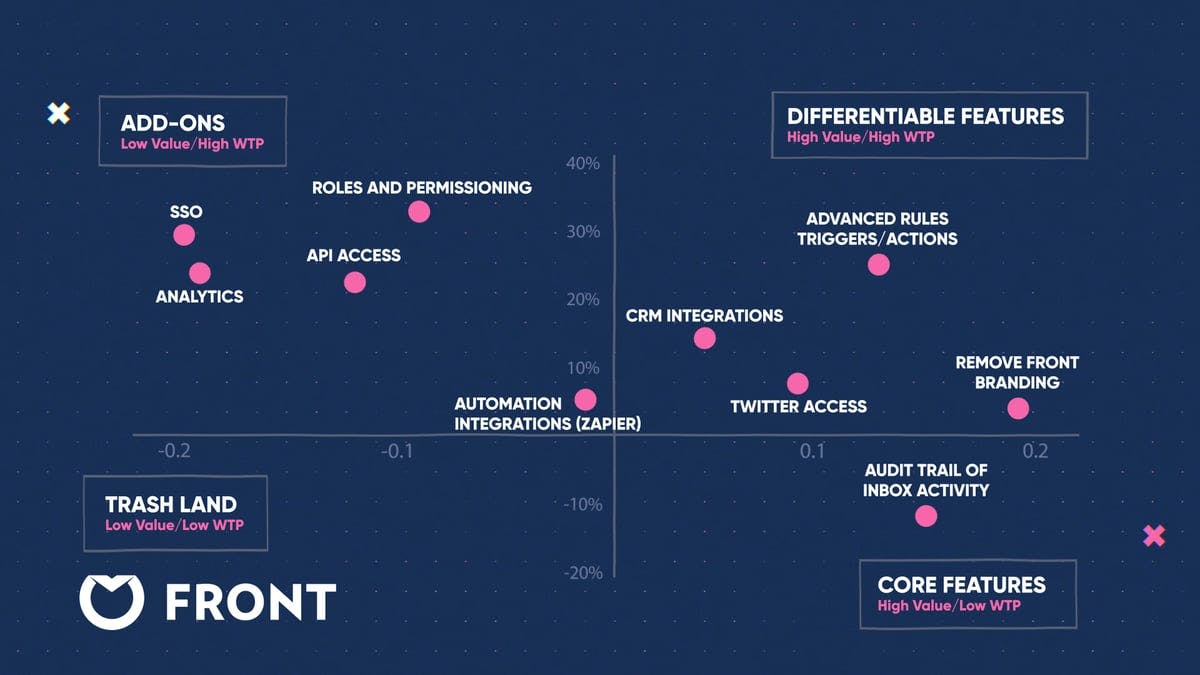
Their Twitter access seems to be a premium feature, but it should be part of the standard offering. It's unclear why they made this decision, as it doesn't seem necessary given their current user base. They should focus on making all channels more accessible to increase customer usage.
As you build your product, adjust your pricing to fit. Some features that seemed important at first might not be. For Front, focus on communication and include as many monetizable and retention-focused features as possible. Consider offering all channels in the next pricing tier, but not necessarily in the lowest tier. Pricing should be based on the number of channels attached.
Understand how value shifts based on use case
We've analyzed willingness to pay based on primary channels besides email. The results are intuitive. Social media, especially Facebook, has a wide range. Interestingly, SMS commands a premium, which may lead to false positives. Although people are willing to pay a high price for it, the product's main focus is workplace communication or a manager platform.
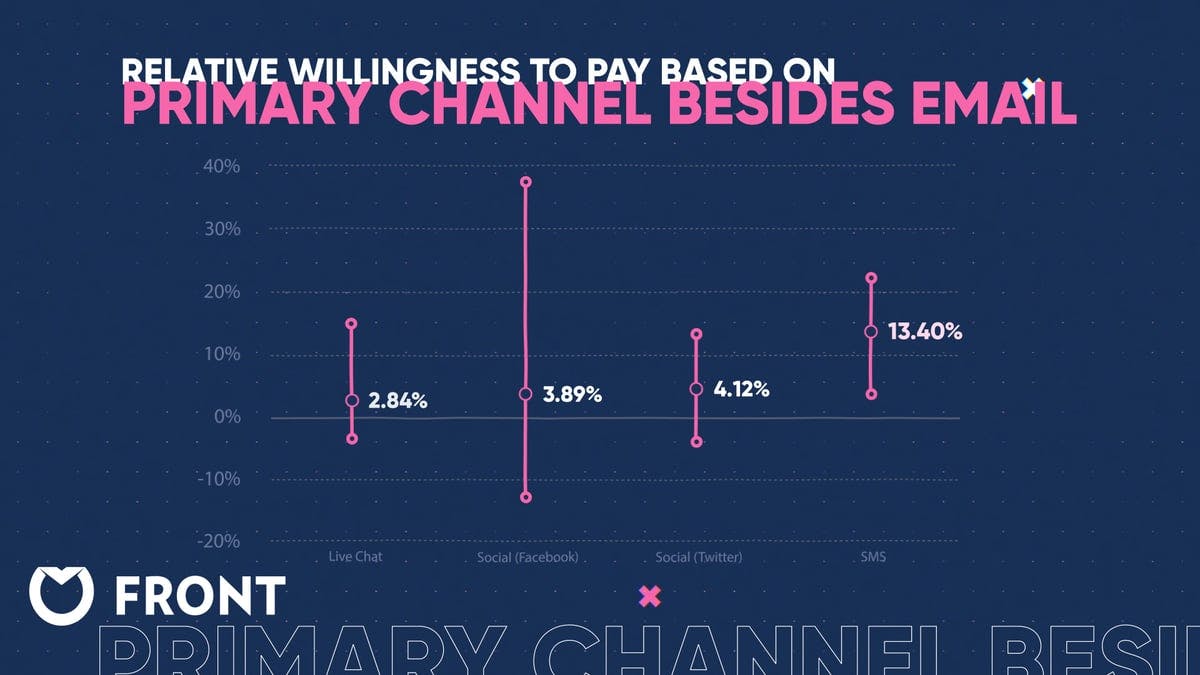
To increase revenue through Twilio charges, Front can include them early on. Once people are using SMS through Front, charge them. Front can get a discount from Twilio, but not pass it onto its users. For instance, if Twilio charges two cents per text, but Front has a discount of one cent per text due to volume, Front can still charge two cents per text and collect the float. Shopify does this with payments. Social media has high variance, but Front can pass those costs onto its users and provide easy access to SMS. This will improve retention and upgrades can be offered based on usage.
Integrations need to be a big consideration for retention
Integrations are more important for retention than willingness to pay. Companies often underestimate the evolution of integrations in the last decade. In the past, a Salesforce integration could be sold along with a product for an additional $1,000 per month. That was the world we lived in. However, with the rise of Zapier and other integrations that are demanded by users, the willingness to pay for integrations has decreased. Nevertheless, users who have integrations with your product and other products tend to stay with your product for a longer period of time.
The lower end line represents customers with no integrations. We tracked net revenue retention for about 1500 different subscription companies. Those with zero integrations had almost 20% lower retention than those with one to three integrations or more than three integrations. If products are integrated and share data, the experience is better.
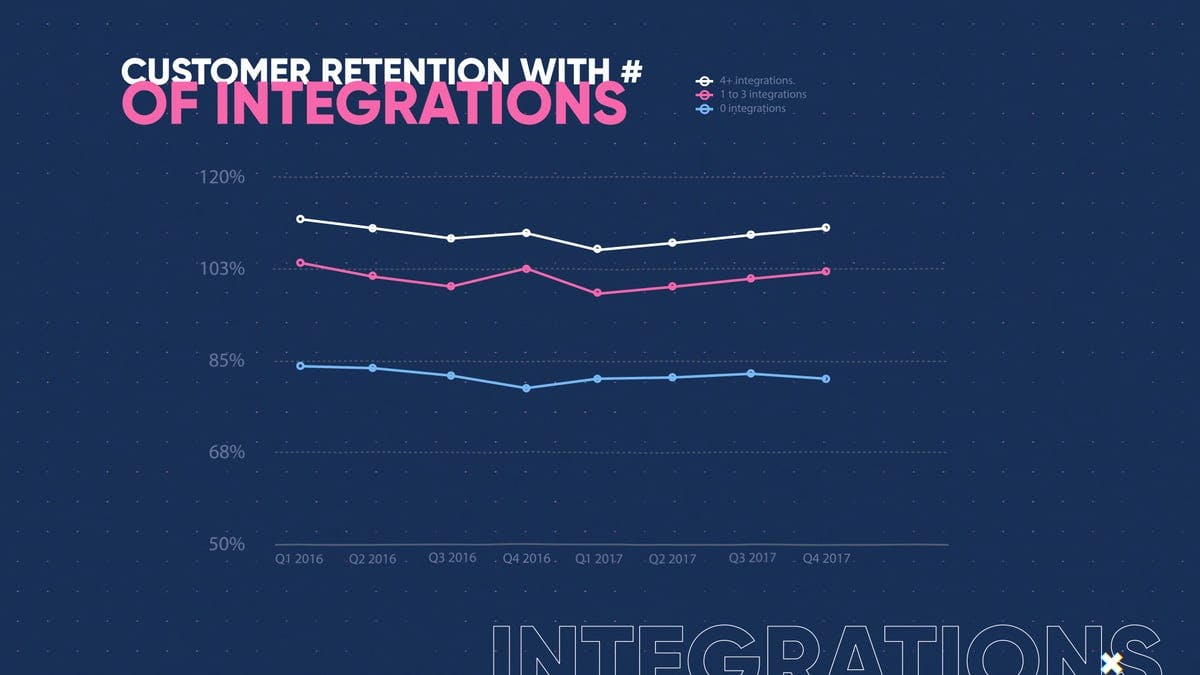
The direction didn't really matter, which is fascinating. We live in a multi-asset world, and the argument that people are using too many apps is a BS argument. People don't mind using multiple apps, but they prefer integrations that allow them to use and connect all their systems. As a business, you should have an integration strategy and be careful with separating integrations from monetization.
They can introduce CRM integration in a higher tier to attract customers at entry level price. Once they start using Front with other integrations, they might want to upgrade for additional features. Avoid charging extra for integrations.
In conclusion, Front is a communication platform that aims to revolutionize corporate communication by integrating different channels and providing a shared view of conversations. Despite receiving criticism for fighting battles on multiple fronts and having a fragmented customer base, Front has raised over $100 million and has a high valuation. However, data analysis suggests that Front needs to be more cautious with push pricing and reconsider their pricing and packaging to avoid being punitive. Additionally, Front should have an integration strategy and consider offering all channels in the next pricing tier to increase customer usage and improve retention.
Need help with your pricing?
Price Intelligently by Paddle is revolutionizing how SaaS and subscription companies price and package their products. Founded in 2012, we believe in value-based pricing rooted in first-party research to inform your monetization strategies. We combine expertise and data to solve your unique pricing challenges and catapult growth.
(00:00):
Perfect recipe for pricing disaster: push pricing, and nickel and dimeing your customers.
(00:07):
Welcome to Pricing page Teardown, where the ProfitWell Crew breaks down strategies and insights on how subscription companies from all corners of the market can win with monetization.
(00:23):
Welcome to Pricing Page Teardown. I'm Patrick Campbell. I'm Rob Litterst. And this week we are breaking down someone who is both reinventing a new space ooh. But is also kind of creating their own new space. All right? Which I feel like is the most nebulous introduction we've ever done, maybe, um, but it's all in the world of email. And that is the company called Front. And we're big customers of front here at ProfitWell. Awesome. And we wanted to kind of dig into their pricing, see why we're paying and why we like paying them, um, but also noticed a couple of big problems that they have with their pricing, or at least I shouldn't say they're big problems. They're problems that could potentially be big problems. And so what we're gonna do is we're gonna find out what is front doing really, really well. What is front doing not so well with their monetization. We're gonna wrap that into a nice little case study so that you guys can take these lessons away for your own pricing strategy and get your monetization moving in the right direction.
(01:13):
Email is fundamental to our everyday lives, both personally and professionally, but when it comes to business email, the pace of innovation has been at a standstill for 15 years. This is what led Matilda Colin and Lauren Peren to found front in 2013 from France. After moving to San Francisco to accelerate front through Y Combinator, Colin and Peren set out on a vision to give email and corporate communication at facelift by creating a product that pulls together disparate conversations from many channels like Outlook, slack, Twitter, and sms, and making them simple for teams to have a shared view of what's being worked on, who's working on it, and ultimately all the context around these conversations. The vision for Front goes much deeper, though. Colin wants to reinvent work through their product Growing up in France and a family where no one enjoyed their jobs, she doesn't want others to experience the same thing.
(02:05):
And fronts focus on email can fundamentally impact a team's fulfillment. We have an entry point to deeply change how people work. She says by fixing email, front untangled, convoluted processes, miscommunication, and the cross signals that hamper most teamwork. By improving all of this, stress goes down, emotions stay positive, and productivity goes up. Throw in a belief in improving productivity through workflows and automation. And you have a recipe for groups of individuals becoming productive teams and every team member getting an opportunity to do their best and most meaningful work. And its vision seems to be working as friends race over 100 million from blue chip firms like Sequoia, as well as software elites like Zoom's, Eric Yuon and Qualtrics founders Ryan and Jared Smith, just to name a few. Their dedication and funding has led to over 200 team members across offices in Paris, San Francisco, and Phoenix.
(03:00):
Over 6,000 customers and an 800 million valuation. Not everything's amazing with Front though critics point out that they're fighting battles on multiple fronts for one pinpointing where front fits in the wider messaging and communication categories. Difficult, which doesn't mean they can't be successful, but makes category creation difficult. They're also dealing with high fragmentation amongst their customer base with many different types of businesses using their products. It's a champagne problem, but when mix, when needing to make product and marketing decisions, it can get complicated and go flat. So the question is, how can front train the market when there are many, many alternatives and incumbent players that maybe don't do what front does, but do some or a lot of it. And how does Front get their monetization in the right place to make sure they're not alienating their different customer constituencies front has a lot of work ahead of them. So we're gonna answer these questions by collecting data from current and prospective front customers, and we're gonna reveal all of it coming up next.
(04:01):
What's the most annoying thing about email? I hate having to go back and find emails that I know I saw that I just, I just can't like keep track of them. Google search Gmail search ironically sucks. Yeah, I think the other thing is, is just lost context. Yes. So one of the things I think front solves really, really well is, and they, they really accentuate this on their website, is this whole concept of I might have an email that I'm gonna forward to you, I need context from you, you're gonna forward it back. And it was one of those things that confused me really, really early on because I was like, why isn't this just a help desk? Right? They just put an interface on top of email so that you can put notes, you can respond to the same inbox. Um, you can keep the same inbox and it all feels like it's coming from the same person.
(04:39):
There's a few inboxes, some of you know this, that if you email them, um, you get responses really quickly. Yeah. And you wouldn't think you would get responses really quickly, and that's because 10 people are inside that inbox, right? But I think that the other thing that front's trying to do, which I think is, is really admirable, is they're trying to push this into a new place of, you know, kind of workplace communication, right? Because they've taken not only email, it's where they started, but they now added live chat. I think they're adding different social channels like Twitter as well as Facebook. The folks who have tried this before, they didn't have a design focused thesis mm-hmm. <affirmative> when it came to this. They were just aggregators. And it's one of those things where they have not only the SMB value proposition of, Hey, I just don't wanna open up all these apps to like respond to messages.
(05:19):
But they also have like a growing company value proposition of, Hey, you have a lot of stuff. This is a really good efficiency and effectiveness platform for you. Your positioning really, really matters. Right? And unfortunately, I think for front, you know, when you first went to this website, not to embarrass you mm-hmm. <affirmative>, but you're like, what do they do? Yeah. You know, when we scroll down on the actual page, it starts to really come, come alive, right? It's all about email, email overload, feeling out of the loop. It's time to release email from isolation. It's email, email, email. Email's gonna be 90% of the communication in most businesses. And then we throw everything else in there as well, which I think is like the battle that any, like anyone who's trying to create a space is end going to end up having. So let's take a look at their pricing page and then let's dig into some of the data that we collected on current and prospective customers. Yeah. And we're gonna find out what front is doing really, really well and what they're doing not so well or could be tweaked a little bit to be better so that you can take all of these lessons away into a nice little case study for your own business and improving your own monetization strategy.
(06:18):
Okay. Cool. Overall great pricing page. Yep. At least in my opinion, I think there's two little tweaks that I would, I would kind of look at. Okay. The first tweak is, the one thing I do really, really well here is the starter plus prime enterprise. Some people do like Pond Lake. Oh shit. Shit plan, right? Which is like, it depends on your product. It's a little kitchy. I mean, this is great, these little callouts mm-hmm. <affirmative>. So the plus plan, customize your workflow with rules and integrations. Prime more channels and data to transform your teamwork. Those are very function based, right? And what we historically find is that these little callouts should be value prop and persona or segment based, right? Some identity, right? So great for small business, just getting started with a few inboxes, right? That's way too long. But like that, that helps contextualize where I should go because when I come to this page, really within five seconds, I should roughly know where I should explore more.
(07:10):
It's really, really hard for me to figure that out. Yeah. Um, or, or figure out where we should be. Because I'm looking at this and I'm like, well, I think I wanna customize my workflow with rules and integrations, but I don't know if I need more channels. Totally. Like it's just one of those things where it doesn't contextualize me enough. You wanna be easing that user into a decision even from the get right. And so all of a sudden it's like, okay, 3, 5 15, I should still understand again where I'm going. Right? And I think that's a really, really big point. One thing I really do like, yeah, they have that compare all features drop down. Yeah. This is fantastic. They did a great job of really kind of consolidating the salient features and bringing 'em up top with value metrics. I, I love the fact that they don't have just like this huge mess of check boxes, right?
(07:50):
Yeah. There's too many check marks problem. Yeah. I also like how, and I know this is super subtle, but they took and basically organized these sections. So team collaboration section, team channel limits and types, right? It's a lot of information but they highlight, you know, so you can scroll over and basically not get lost. You need to explain a lot of information in a short amount of space. Right? And, and you don't want to confuse people, but there are people who do want to explore really, really deeply. Right? Then when I go to hide all or show all features or compare all features, all of a sudden I'm looking at a world where it's like I kind of already know where I should be, right? So I'm going down and I'm looking at that plan very specifically and then I'm like, oh wait, but there's this thing up here that I want, maybe I do need to be on the prime plan. Totally. Or all these features they're saying I need, I don't, maybe I need to be back on the starter plan. Yep. Do you wanna get into the data? I thought you would never ask.
(08:36):
So where does our data come from? Here at ProfitWell, our price intelligently product combines proprietary algorithms and methodologies with a team of pricing experts who think about this stuff more than anyone else to help companies optimize their monetization strategy. We do this by going out into the market and collecting data from current and prospective customers. Having the ability to collect data from everyone from a soccer mom or dad in the middle of Kansas all the way to a Fortune 500 CIO in South Africa. We then take that data and run it through our algorithms and analyze it in every direction to determine a company's ideal customer profiles, as well as which segments value which features and which segments are willing to pay more. All in the spirit of determining how all in the spirit of determining how a company can use monetization for growth.
(09:25):
First up, push pricing is potentially problematic for front, so they need to be careful. Okay. And we've talked about this concept of push versus pull pricing and basically the idea is pull pricing is when the usage or the feature need of the actual users are pulling them up to a more expensive tier. Right. SIA video hosting analytics, um, basically what they do is as you use more videos, you pay more and you're kind of more than happy to pay more. Push pricing is like, Hey, I'm gonna push that user up to another tier, whether they might like it or not. Mm-hmm. <affirmative>, and this is very well seen by like Salesforce where hey, I only want that one feature but I have to upgrade and get all these other features. Right, right, right. And I'm not really happy with it cuz you kind of forced me into this and I'm gonna end up not using 50% of the features that I'm offered within this tier and front isn't necessarily doing full Salesforce and full Salesforce isn't a bad thing.
(10:14):
They're obviously super successful. Right. They've done, okay. If we go back to their actual pricing page, what you'll notice is that things like sms, um, channels, you only can get in the prime plan. Wow. Which is $50 per user per month. Obviously it's one of those things that, you know, you, you would want to have an extra charge, right? Right. But you're pushing me up into this tier with all of these other features where if I'm an e-commerce or a D two C brand, I might only have email and, and you know, basically Messenger and maybe sms, right? I don't need necessarily all of these different features or these advanced rules and SLAs and all these other things, but you're making me pay for it and you're making me pay in some cases five x. But they probably were sitting there and they're like, well there's extra cost to this.
(10:57):
You know, there's all these other things that we have to think about and therefore like we only should be, you know, putting this in our prime plan. They should just include this as an option that you can get. Maybe not in the lowest tier, but at least the the main tier. The main first tier Totally. That they're offering. There's some features here like private inbox analytics, totally fine to be a differential feature. I probably would pull that out and make it an add-on. But I'm fine with that being in a premium tier. Mm-hmm. <affirmative> because people who are at that size, they probably are expecting it. But another place where this gets kind of tricky is when you're thinking of some of these integrations, but you have to be on this prime plan, the $50 per month tier to get a CRM integration, which wow, maybe we can justify.
(11:34):
Yeah. Because it's like eh, if you're a crm, you're maybe you're in a higher end and you want to connect your apps and you're not like a small company. Mm-hmm. <affirmative>, but then also for a Zap your integration. Yeah. Remove branding from the front chat widget is in the prime plan. Yeah. That's something to me and it me, it's kinda like if I'm paying you $25 per month per user and let's say like I have five to 10, it's not a small amount of money, right? It's not a huge amount of money, but it's kind of like, why do I have your branding on there? Right.
(11:59):
You're about to see something called a value matrix here. We collected data from the group comparing feature preferences and plotted those on the horizontal axis. More valued features on the right, less valued on the left. We then collected willingness to pay for the overall product and plotted that base on their number one feature preference on the Y axis. Analyzing data in this manner allows us to determine which features are differential add-ons, core or commoditized for each segment.
(12:29):
As we can see here, there is some higher willingness to pay for it, but it's very, very low. And things like the audit trail automation integration with zappier Twitter access removed from branding, they're kind of like in this plus or minus 10% of willingness to pay in the value matrix. Which means those are things that you're kind of pushing someone up where you really should just include it. Right? Or like have them pull, which means you gotta move it to lower tiers. Um, some of the other things like analytics, s SSO roles and permission and these maybe should be add-ons. Yeah. It's fine that they're in premium tiers. We're looking at an aggregate view on this value matrix, but it's just one of those things that I think front really needs to reconsider where their pricing is totally in terms of their packaging to figure out like where they're kind of being punitive.
(13:13):
And probably the most punitive piece here is their Twitter access is basically, um, an add-on. Wow. When at most it should be a differential feature and it probably should just be an included as a channel. Totally. Again, I'm sure there's some like cost or something associated with that which pushed them to make it more premium, but it just doesn't make sense where, at least where I understand their current user basis. Right. Yeah. You would think that they would make all, everything that has to do with channels just kind of easier to access Right. And kind of boost the number of channels our customers are actually using. Yeah, a hundred percent. You know, you kind of built your pricing up as you built your, your product, right? And what ended up happening is some of the things that you thought of in the early days just no longer make sense anymore.
(13:51):
And so you wanna take a step back and I think the one thing that front could do as well as everyone is like, what is the core functionality of your product? Right? Well if it's communication, we kind of want as much communication inside front from a both monetizable, but also from a, you know, retention aspect as possible. Totally. Therefore maybe here all the types of channels, maybe they're not all included at the lowest tier, but they're at least all included in the next tier up. And then it's just based on the number of channels that you have attached. Right. And I think that's the thing to really think about. And the nickel and diming might be a problem when you look at something like Twitter in this case because you know, it's like why are, why is this separate? Right? I understand there's only like one Twitter account probably in a business.
(14:28):
Totally. But if even if I'm an agency, like why are we including this as a separate thing? Yeah. Next up, let's understand how value shifts based on use case. So what we looked at here is relative willingness to pay based on the actual primary channel besides email. Exactly. And you can see some pretty intuitive fallout here. I thought super interesting social media. Um, Facebook particularly is just such a wide range. Such wide range. Yeah. Um, sms, interestingly we were talking about that a little bit earlier. Yeah. Does command a premium. Yeah. And I think that's why they're getting some, some false positives on obviously people are willing to pay at that height for it. Right. But again, the central thesis of their product is that workplace communication totally. Command or platform, I can't remember the exact verbiage they're using and in my mind they have a better opportunity to make backend revenue through Twilio charges.
(15:15):
Yep. Include it early on. Right. Include it like get that lock in where people are using SMS through front. Totally. And then charge, like get the discount from Twilio, but don't pass that discount onto your users. Right. Let's say it's 2 cents protect. Well if, if Twilio is giving front a discount because of their volume at 1 cent protects mm-hmm. <affirmative> still charge 2 cents protects. Right. And then collect the float. This is what Shopify does with payments. Exactly. They're all pretty much the same. Right? Like yeah, there's, there's high variance on social because I'm sure there's people who have much, much larger Facebook following, totally Facebook selling going on. But pass those costs onto your user but don't pass on the ability to access something. Right. And give users the ability to access SMS more easily. Right. Totally. And get people using more channels. Totally stickier. It's gonna improve attention, well upgrade them based on that as well.
(16:01):
Finally, integrations need to be a big consideration for retention. More than willingness to pay. A lot of companies, you don't realize where the world of integrations has gone in the past 10 years. Uh, 10 years ago or 20 years ago even. You could sell a Salesforce integration in addition to your product for an additional thousand dollars per month. <laugh> just for the integration. So you're selling your other product for a thousand bucks a month, you can sell the integration for a thousand bucks a month. Right. That's kind of where the world that we lived in, but with Zapier as well as like just integrations become easier but also more demanded by our users. What we've consistently found is that the willingness to pay for integrations has just kind of tanked. Plummeted. Yeah. But in addition to that, the retention of those users who have integrations with your product and other products is so much higher.
(16:45):
Oh yeah. Makes it so much stickier. Taking a look at the data here, what you're seeing is this lower end line here is basically the folks who have zero integrations, you're looking at overall net retention. Okay. So net revenue retention, we tracked it for, I believe it was a thousand and a half. So 15 to 1600 different subscription companies. Okay. And what we found is that those customers who essentially had zero integrations amongst these companies, their retention was almost 20% lower. Wow. Than those folks who had one to three integrations with the product or had more than three integrations with the product. It makes sense, right? If you have your products touching each other and kind of funneling data back and forth, then totally. It's gonna make for a much better experience. Yeah. And it's, I the, the direction of this didn't even really matter.
(17:26):
Right. Which was really kind of fascinating. And I think that it's just we live in a multi app world and this whole like people are using too many apps. I think it's a BS argument. Mm-hmm. <affirmative>, I don't think that's the case at all. Um, I do think it's a case in some instances like front, right? Where I think that like people don't want to use too many apps, but they're totally fine using front then also using profit, well then also using Salesforce and also using these other products. And you wanna do is you wanna have these integrations kind of flowing mm-hmm. <affirmative> so that people can kind of choose the apps they're using and they're probably gonna choose the apps that allow them to integrate all the other systems that they have in order to have that retention. So, long story short, I think the big takeaway that I would take as a business from this is that you should have an integration strategy within your business, but also you should be very, very careful with separating out integrations from a monetization perspective.
(18:12):
Mm-hmm. <affirmative>, I think pushing a CRM integration into a higher end tier, I could probably justify that. Right. I really could. I mean there's a world where it's no longer going to be like feasible. One strategy for front and one strategy for a lot of folks is getting folks in on an entry level price, getting them integrated with everything with your products. Exactly. And then boom, getting them on a higher end tier. Love that. Right? Yeah. Because all of a sudden they're like, oh yeah, of course I love front, I use it with everything and all my integrations and it like pushes the data in and out or whatever it is. Yeah. I should upgrade for that other feature cause that's gonna make the integrations even better. Exactly. Rather than nickel and diming the integration.
(18:48):
Let's recap, let's recap. First up, push pricing is potentially problematic. Be really careful with this. Uh, I don't think front does an egregiously bad job at all. I think they actually do a really good job with push pricing, but there's a couple of things that they need to reconsider that probably were like old iterations of their pricing that need to be updated. Um, and you just gotta be careful as a business with push pricing because push pricing is one of those things that it's just not, it's, it's just not really acceptable to users anymore. Just in this world where, you know, software integrations, all these other things are very ubiquitous. So you gotta pick your shots really, really well when it comes to kind of pushing that user into an upper level plan. Totally. Next, understand how value shifts based on use case a hundred percent.
(19:29):
So super, super important to understand, all right, which platforms, which channels are people using in front's case and what's the associated willingness to pay there? Yeah. Um, and also think about, you know, what does that mean for overall monetization strategy? Yeah. And I would, I would just take that even a step further and it's, you know, with front, they have such a, at least in my my understanding, such a fragmented user base where they have really small companies mm-hmm. <affirmative> tech companies, all kinds of companies using the product depending on how they're using it, E-commerce versus SaaS, et cetera. Those use cases probably have different willingness to pay. Oh that's, we looked at the channel difference in willingness to pay, but there's probably an argument to be made to take that down to a segment level. Oh yeah. To actually understand what in the world's going on.
(20:09):
And the final point here is integrations need to be a big consideration for retention more than willingness to pay. I think a lot of people, they wanna monetize what they built. Mm-hmm <affirmative> and some of these integrations are gnarly, they're really, really hard to build. We know that better than anyone cuz we have a free product that's contingent on a lot of integrations, but more often than not, it's so much better to give that integration away or monetize it very loosely, um, in order to get people to move, move up and really, really retain your product. So make sure you have some sort of an integration strategy.
(20:40):
Alright, that's all for this week's episode. A pricing page. Teardown, if you got value from this, if you learn something, if you had a takeaway, make sure to share this on a social media channel of your choice. Um, and maybe we'll see those channels to our front account. Yeah, there we go. Although LinkedIn, we gotta get LinkedIn on there. That would be really, really useful front. Just wink, wink, nod, nod, <laugh>. Um, but if you want this data for your business front, if you wanna talk about your pricing strategy, um, or if you just start a business that wants some help with your pricing, feel free to reach out to me. I'm patrick@profitwell.com or reach out to Rob here@robatprofitwell.com and we'll make sure you get you to the right team, the right person to help with your monetization strategy. What have we got going on next week?
(21:15):
Next week we have, I think the greatest most used product in my life in the past 18 months is this, uh, slack. It's not Slack, zoom. It's not Zoom Chipotle, it's Chipotle <laugh>. So we're talking about Chipotle and talking about what would a Chipotle subscription look like to not only boost community, but also take care of some of the pesky problems that Chipotle has had in the past 18 months. And I'm really excited about this one because Chipotle is near our office. So just a common lunch occurrence. I would subscribe, I would subscribe to some Chipotle, but we're gonna go through what they're doing well, what they could be doing even better in the context of the problems that they're having. So you can wrap this all into a nice little case study to get your monetization strategy moving. We'll see you next week. See you next week.
